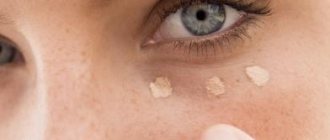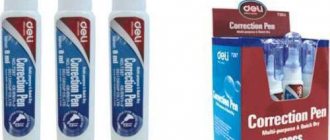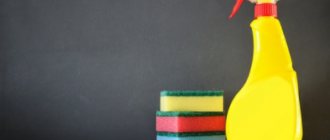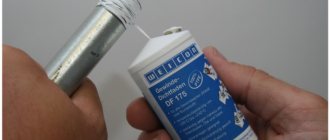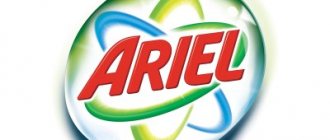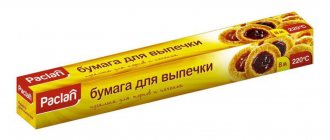Schoolchildren and students, office workers - everyone who is associated with paper media uses proofreaders today. The first samples of these products appeared in the fifties of the last century. The Japanese and Americans are still fighting for the palm of this invention.
Over the past half century, the barcode has changed significantly. Several types of stationery “paint” have appeared, each of which has both advantages and disadvantages. Today, correctors are divided into dry and liquid. The first includes the most modern development - correction tape, the second - a pencil and a liquid stroke.
Correction fluids
They are produced in small bottles, with a brush, applicator, and sponge applicator built into the cap. This type is simple and easy to use: shake the bottle, dip the brush in the liquid and paint the desired area.
However, in our time, such a product is considered an outdated type, since for a long time manufacturers have been producing more ergonomic and convenient forms of putty.
2 years ago
Gently and accurately corrects any type of writing. Does not require drying, you can write immediately after application,…
5 years ago
video instructions for using a tape corrector.
2 years ago
Purchased here: https://ali.pub/mruif You can join the affiliate program and make money on YouTube...
3 years ago
5 years ago
- Posture corrector for children with slouching. Benefits, indications
2 years ago
12 months ago
In this video I show you how to use a correction pen and correction tape!
2 years ago
1 month ago
1 month ago
Pencil corrector
It looks almost no different from a regular pen, but instead of paste it is filled with correction fluid, which comes out through a small hole (1 mm) in the metal tip.
The advantage of this type is that it allows you to make point corrections to the smallest details of the text and even correct character flaws. But deleting a large piece of text with a pencil is not very convenient. In this situation, it clearly loses to liquids with a brush.
Correction roller tape
This is the latest development in the world of correctors. It is a dry composition, which is enclosed in a convenient and ergonomic roller. Correction tape will correct the desired section of text in a matter of seconds: the tape applied to the paper (provided that the corrector is of high quality and is used correctly) will be invisible, not only by sight, but also by touch.
This type has its drawbacks: it will not help in correcting small point errors, its width is standard (4-6 mm), so when correcting small font with small line spacing, you can easily go beyond the edges of the lines.
- Check spelling and punctuation online, check spelling in text
Sequence of actions when making a corset
To make a posture corrector, a person must have sewing and cutting skills. Correctly drawn up recess drawings will ensure that the result obtained corresponds to the desired one. You can use ready-made patterns from the Internet, but in this case it is impossible to make a bandage that meets all the requirements and requests.
To properly make a corset to correct posture at home, you need the following.
- Select materials. Fabrics should breathe, be elastic, washable and not wrinkle when worn. Only hypoallergenic materials should be selected.
- To determine the undercuts, it is necessary to take measurements of the chest, waist and hips.
- Draw a pattern diagram.
- Transfer it to the fabric, respecting the scale.
- Each element of the posture corrector must be carefully cut and ironed.
- Secure the corset pieces with pins.
- Use thin and strong threads to sew the components of the bandage together.
- To fasten the elements, use a high-quality sewing machine.
- After stitching the edge, the product must be tucked (preferably with an overlocker).
Read more: Volvo xc90 where is the battery located
Office proofreaders correct blots and mistakes
At the very beginning of the school year, it often turns out that something is missing from the pencil case. Of course, the basic office supplies are already prepared, but there is still room for useful little things. For example, middle and high school students may need proofreaders to keep notebooks accurately.
Variety of species
The most traditional type of these accessories is correction fluid. In its classic form, it is contained in a bottle with a brush built under the cap. With this brush, the white liquid is carefully applied to the paper, painting over the blots.
Products of this type differ in the type of base. The most environmentally friendly liquid is water based. Its main advantage is the absence of a pungent odor. But when using it, you have to wait quite a long time for it to dry. Also, at low temperatures it can freeze. True, this is only possible in frosts below -20° C. Many correctors of this type can slightly wet the sheet. Therefore, it is better not to use them on paper that is too thin.
Alcohol-based liquid does not freeze and dries much faster. However, it has a characteristic pungent odor. Therefore, it is less desirable for use by children. After prolonged use, or if the bottle is left uncovered, the liquid may dry out. The situation can be corrected with the help of a special thinner, preferably made by the same manufacturer. But sometimes it’s easier to buy a new corrector.
The third type is emulsion-based, less common than the first two. The speed of drying on paper can compete with alcohol based ones. He is also not in danger of freezing. At the same time, it does not burn and does not smell so strong. The only serious drawback is that it is difficult to remove if it gets on the fabric.
Another application option is offered by pen correctors. They are plastic “tubes” that can contain the same types of liquid. The corrective agent is applied using different types of tips. Some need to press on the paper. This tip “goes” into the body, opening the liquid supply.
To prevent the liquid from drying out, a small ball is usually placed in a bottle or pen. If you shake the case, it agitates the contents. Therefore, you should shake the liquid concealer before use.
Recently, another type of corrector has gained popularity - dry, also known as tape. Inside the plastic case there is a cartridge with a correction tape based on polyester film. Most often, the case is transparent so that you can see how the product is used. The tape is fed through a narrow flat tip.
It's quite simple to use. You just need to lightly press the tip onto the paper and move it in the desired direction. And then lift it so that the tape breaks. A white, opaque mark with smooth edges will remain on the paper. It's dry, so you can write on top of it straight away. The layer of correction substance is very thin.
- Led strip
A Question of Choice
Liquid in a bottle is perhaps the easiest type of concealer to use. It’s easy to paint over a letter or a whole word with a brush. The main thing is to try to apply the liquid in a fairly thin layer and not rush to write on top until it has dried.
Variety of species
A Question of Choice
The tape corrector is a universal correction tool used in office work. Correction is made by applying a dry correction layer in a continuous line, after which new recordings are immediately made. This stationery product is applicable to any type of paper and corrects printed and handwritten text.
Currently produced tape correctors combine excellent quality and original design. The ease of use, compactness and reliability of the belt mechanisms have helped the products gain wide popularity.
All tape correctors have good covering power. To cover with tape, just swipe the corrector over the text once. A smooth fit and easy tearing at the end of the correction helps to obtain a good surface quality of the corrected area.
The basis for the tape is polyester film. Despite its small thickness, the tape is highly dense and durable, which ensures that the tape does not crack and the paper does not deform. The smooth strip of tape allows you to use any writing medium.
By its design, the “nose” of the tape corrector is as convenient as possible for independently touching the paper. Thanks to this feature, the tape is applied evenly and firmly with little effort.
When applied, there is no slipping of the tape and a tight fit to the paper is ensured. The tape width of 5 mm is sufficient to cover text that contains capital letters.
The presence of a compact ergonomic body ensures comfortable work. For more convenient operation of the corrector, elements in the form of rubber inserts or embossed plastic strips are provided on the body. The use of a special removable cap protects the tape from drying out.
The blister pack of the product contains all the necessary information for the user to help correctly use the tape corrector, including illustrated instructions for use.
Given the many benefits of using tape proofreaders, users are increasingly using them to correct records, especially in cases where large volumes of business documents need to be reviewed and, if necessary, corrected.
Basically, users of this stationery product appreciate the absence of odor and other inconveniences typical of liquid-based correctors, as well as the ability to make corrections immediately after applying a layer, without waiting for complete drying.
Schoolchildren and students, office workers - everyone who is associated with paper media uses proofreaders today. The first samples of these products appeared in the fifties of the last century. The Japanese and Americans are still fighting for the palm of this invention.
Over the past half century, the barcode has changed significantly. Several types of stationery “paint” have appeared, each of which has both advantages and disadvantages. Today, correctors are divided into dry and liquid. The first includes the most modern development - correction tape, the second - a pencil and a liquid stroke.
Advantages and disadvantages
If you have the skills to create fabric products with your own hands, you can make a corrector that will be much better than factory models. The main advantages of such a corset are the following.
- Individual approach. When creating a posture brace, you can take into account every detail and make any adjustments to the product plan.
- Price. Making a corrector will cost less than purchasing any of the existing models at a pharmacy or orthopedic salon. This is especially true for the price of an individual order.
- Possibility of creating several modifications. Since you yourself are a corset sewing studio, the number of products created can be limitless.
- Wardrobe expansion. This applies to design decisions in the design of the corset. You can create bandages both in the classic colors of elastic bandages from the pharmacy, and in a variety of variations, which will allow you to combine the product with any clothing.
However, there are also disadvantages of such products.
- Lack of certification. Handmade products do not meet the standards of medical practice and cannot be used as therapeutic devices. Therefore, in the process of creating a proofreader, you should consult with a specialist.
- Impossibility of manufacturing without the proper skills. If you don’t have sewing or cutting skills, you won’t be able to create a posture corrector.
A simple corrector made from an elastic bandage
For those who do not know how to sew and cut, there are simple instructions for quickly creating a posture corrector.
- Take an elastic bandage 5-6 m long and 8 to 10 cm wide.
- Place the middle of the bandage at the level of your shoulder blades and throw one end over your shoulder and the other under the opposite armpit.
- Wrap a figure eight around your shoulders and armpits several times.
- Wrap the ends of the bandage around your waist and tie them on your stomach.
Correction fluids
They are produced in small bottles, with a brush, applicator, and sponge applicator built into the cap. This type is simple and easy to use: shake the bottle, dip the brush in the liquid and paint the desired area.
However, in our time, such a product is considered an outdated type, since for a long time manufacturers have been producing more ergonomic and convenient forms of putty.
Pencil corrector
It looks almost no different from a regular pen, but instead of paste it is filled with correction fluid, which comes out through a small hole (1 mm) in the metal tip.
The advantage of this type is that it allows you to make point corrections to the smallest details of the text and even correct character flaws. But deleting a large piece of text with a pencil is not very convenient. In this situation, it clearly loses to liquids with a brush.
Correction roller tape
This is the latest development in the world of correctors. It is a dry composition, which is enclosed in a convenient and ergonomic roller. Correction tape will correct the desired section of text in a matter of seconds: the tape applied to the paper (provided that the corrector is of high quality and is used correctly) will be invisible, not only by sight, but also by touch.
This type has its drawbacks: it will not help in correcting small point errors, its width is standard (4-6 mm), so when correcting small font with small line spacing, you can easily go beyond the edges of the lines.
What is needed to properly manufacture a product?
To make a quality posture corrector with your own hands, you need to have an idea of the final type of device. You should visit an orthopedic salon and examine in detail the factory design of the corsets. This way you will be confident in the style, level of rigidity and algorithm of actions when making your own corrector.
In order to create a corset, you must follow the rules:
- determine the location of the curvature of the spine to create the desired model of the product;
- select hypoallergenic materials in the proper quantity (it is advisable to take more than necessary);
- record the measurements to create a product that provides reliable posture support;
- purchase and master a high-quality sewing machine;
- learn how to make professional paper patterns that take into account the structural features of your figure.
Ready-made patterns can be used for posture corrector models in the future. Also, the knowledge described above will help in creating spinal bandages for adults and orthopedic corsets for children.
Corrective tape Attache
This device is produced by the Russian umbrella brand Attache, under which it offers customers office supplies in the mid-price category, as well as high-quality economy-class goods. The history of the stationery brand Attache began in 1997. The company's products are produced at large enterprises in Europe, Southeast Asia and Russia.
The Attache correction tape allows you to write immediately after correcting the text. A removable cap protects the working unit from drying out. Has an increased length (20 m). Tape width - 5 mm.
This correction tape is easily and accurately applied to the desired area of text. How to use? Everything is extremely simple: remove the protective cap, place the tip of the working unit at the starting point of the line to be deleted. Lightly press the corrector onto the paper and draw a solid line of the desired size. The dry layer is applied softly and easily. First, try correcting the text in your draft.
The Attache tape corrector is a compact device that can easily be placed in a pencil case or pocket. It is equally effective on any type of paper. After photocopying it is completely invisible. The device has a removable block, which can be easily replaced with a new one after using the coloring composition.
←→ContentsExpand
What does the market offer?
Today in any stationery store you can find dozens of different models of correctors, both from well-known manufacturers and not so well known. Products from the French company BIC, which offers a huge range to suit every taste, are very popular on the domestic market.
BIC correctors are the most popular.
If you need good stationery putty, you can safely purchase products from Russian brands Erich Krause and Brauberg, whose products are of high quality and a wide range.
In addition, proofreaders from Mitsubishi – Uni, as well as stationery from Krone and 4Office, can be a good choice.
For those who prefer everything bright and unusual, the British brand Yes offers pens of various colors in original designs.
Yes company offers pens in different colors.
Sometimes modern technologies present very pleasant surprises that subsequently make life much easier, for example, a ballpoint pen, tape or a zipper. So is the corrector pen - what it is, its types and how to use it, some people know it from elementary school.
The correction pen has become an indispensable assistant for students of different ages.
For many people, this simple item has long become indispensable, making it easier to carry out work related to editing and editing text. Ultimately, everyone benefits from saving time and effort.
Stationery putty
Putty or proofreader is a tool used in office work to correct errors in written or printed paper text. After drying, it looks like a white stripe that completely covers the mistake made. The product was born in 1956 thanks to the American Bette Nesmith, who a few years later formed a company called Liquid Paper, which means “liquid paper”. Initially, the gadget was an ordinary watercolor-tempera, which was used to cover up blemishes with a brush. Subsequently, the composition of the corrector was improved many times.
Attention!
Putties differ from each other both in the method of applying the correction layer, the type, and its composition.
By type of putty there are:
- Liquid. Inside the container with liquid corrector there are often balls that help to better agitate the solution. They are also found in the form of handles.
- Dry. Offers appeared on the market relatively recently and are a tape housed in a plastic case, onto which a layer of dry corrector is applied.
We clean the surfaces from the corrector in the form of a tape
If you use a corrector in the form of a tape and accidentally stain furniture or leather, removing this blot will not be any problem. You don’t have to think long about how to wipe the putty off the table. The putty in the form of a tape can be easily wiped off if it is exposed to moisture:
- Place a wet cloth on the blot.
- In just 10-15 minutes you can easily fix this problem.
We suggest you read How to get rid of flies in a bathhouse
Types of liquid putties
Liquid correctors are produced in the form of small bubbles or cans, which differ in the methods of applying the composition. It could be:
- brush;
- spatula;
- foam applicator.
The main components of any correction fluid are PVC, calcium carbonate, purified gasoline, titanium dioxide, but they all differ in the base, which can be:
- One. Non-flammable, not dangerous to use, odorless, freezes at low temperatures, and takes a relatively long time to dry.
- Alcohol. It dries quickly, does not freeze in winter, is flammable, and has a pungent odor.
- Emulsion. Dries quickly, has no odor, is resistant to low temperatures, and is not flammable.
When the composition dries inside the container, it is revived by adding a few drops of water and zinc white (gouache). If the corrector is not at hand, you can make it from PVA glue and zinc white (gouache). Mix dried gouache and PVA in equal quantities to form a thick sour cream and apply to the area that needs masking.
Dilution
If the correction fluid inside the pen has hardened, there are several proven ways to get it back into working order. So water-based paint is easily diluted with water.
The water corrector is well diluted with plain water.
Dried alcohol corrector can be diluted with alcohol or acetone. You can also use nail polish remover.
If the alcohol-based corrector has dried, you can dilute it with alcohol.
If the stationery putty based on emulsion (oil) has hardened, only a special solvent, which is purchased separately, will help.
Dried emulsion corrector can only be diluted with a special solution.
Important! Sometimes poor performance of a corrector can be caused by its improper use.
For the corrector to work well, you need to use it correctly.
As a rule, when using for the first time or after a long break, it is recommended to shake the handle well - there is a metal ball inside it, specially designed for stirring liquid.
Shake the pen before starting work.
Corrector pen
If many mistakes are made, then to correct and disguise mistakes, use a stroke - putty, a corrector with a brush, with the help of which they cover the written layer with a width of 3-4 mm. To correct spot marks, a corrector pen is more suitable, with the help of which a layer 1 mm wide is masked, which, in turn, is inconvenient to use for correcting large errors.
What does it consist of?
The pen is a bottle that holds up to 30 ml of correction fluid, with a tiny metal ball inside for stirring the mixture. There is also a microvalve inside that regulates the supply of composition to the writing element. The pen works in the same way as a regular ballpoint pen: when you press on the paper, the roller bearing rotates and allows the masking fluid to get into the place of the mistake through a hole in the metal tip.
Rules for working with a corrector pen
Just before editing the text:
- shake the handle several times to mix the liquid;
- remove the protective cap and lightly squeeze the container with the composition;
- then they paint over the slips and blunders, as if they were sketching with an ordinary pen or pencil.
Attention!
To avoid rapid drying of the correction composition, do not leave the handle open.
If the composition does not appear on paper, then the following has happened:
- Drying of the composition on the ball assembly. In this case, resuscitation measures are taken. They press the ball mechanism inward a little with a needle, trying to turn it around, shake it a little with the corrector and try to paint the pen with pressure.
- If actions with the ball mechanism did not help, the reason is that the composition has dried out in the tank. If the base is aqueous, add a few drops of tap water; if it is alcoholic, add a little liquid containing alcohol. To carry out this procedure, disassemble the pen and pour a little diluent into the ball assembly.
How to fix a corrector tape with your own hands?
If the roller of the new tape does not unwind, that is, it slips, but the other roller continues to spin, the corrector needs to be repaired.
- Using a straightened paper clip, remove part of the used tape, approximately 3-4 cm;
- we stretch a new tape (the used one will be pulled in), make sure that both tapes stick out a little outside, 2-3 cm;
- cut a piece of tape with a margin, 2 times wider than the tape;
- glue both tapes, wrap up the extra tape;
- fold the tape like an accordion and repeat the procedure, the used tape may bend a little - it’s okay, it will be tightened by the roller;
- after that you need to hide the place of gluing, to do this we slowly scroll the tape;
- we try it on a draft, do it several times, after two or three turns the excess tape will go inside.
Read more: How to install rear window 2109
The ideal concealer that heals, moisturizes and beautifies the skin - isn’t this the dream of each of us? It turns out that such a remedy exists, and you can make it yourself. Sounds too good to be true, doesn't it? However, there is no guile here; this method is promoted by natural beauty bloggers and simply connoisseurs of healthy care. I tried this recipe and am in a hurry to write about it. He's amazingly good.
There are only two ingredients: loose mineral powder and oil or oil serum.
Let's imagine that the palm is a palette, and we are artists. You need to take a little powder in your palm, add a few drops of oil to it and mix it all. You can apply the finished product with your fingers or a brush, whichever is more convenient for you. The main thing here is to properly prepare the skin: it should be well cleansed and moisturized. The ideality of such a concealer is that each time it creates the desired consistency and richness of the shade, which can be varied each time depending on the needs of the skin right now. The color, density and properties of the product are under control. Let me remind you that mineral powder contains a sun protection factor, and this is another important plus.
The highlighter will fit perfectly on this foundation. You can fix the tone on your face using hydrosol or thermal water. All that remains is to enjoy and collect compliments. Does anyone use a similar recipe?
Problems with posture begin in childhood. The cause may be either the child’s constantly hunched back while sitting or a genetic predisposition to the development of spinal column defects. However, postural distortion can also occur in adulthood. Stooping while walking, excessive physical activity, sedentary work and other factors directly affect changes in the curvature of the spine.
Orthopedic corsets are used to correct defects. But they have a high cost, and not everyone can afford such a purchase. Therefore, it is useful to know how to make a posture corrector with your own hands. Also, bandages sold in orthopedic salons or pharmacies are presented in standard models that may not suit the needs of a particular patient. In this case, creating a posture corrector yourself is a priority.
Tape correctors
They are a tape with a dry corrector applied, enclosed in a roller.
The advantage is the ability to immediately write on the correction tape and the impossibility, if used correctly, to visually and organoleptically determine its presence on the sheet, and the disadvantages include breaks in the tape if the corrector is handled carelessly. The tape width is 4-6 mm, at which it is impossible to mask point errors. Russian users can purchase these products, manufactured in our market by Attache. Its advantages include the ability to change the module with the tape. Before use:
- remove the cap;
- set the roller to the beginning of the text being corrected;
- Without letting go of the gadget, draw a continuous line of the required length.
Description and types of products
A posture corrective corset is an orthopedic product consisting of several elements that provide reliable fixation. The materials from which bandages are made are most often durable elastic fabrics, specialized plastic, as well as various metals (in the case of correctors with increased rigidity). All materials must be hypoallergenic.
Read more: Lubricant for anti-squeak plates
For each type of curvature of the spinal column, it is necessary to select an individual corset model that meets therapeutic criteria. One of the most important differences between posture correctors is the rigidity of the fixation. The following types are distinguished.
- Soft posture correctors. They are products made from elastic hypoallergenic fabrics. Wearing models of this type is most often prescribed by doctors for minor curvatures of the spine. Their use is also justified for the prevention of diseases of the musculoskeletal system and postural disorders.
- Semi-rigid bandages. The products are equipped with fasteners and additional stiffening ribs made of plastic. Such modifications are necessary to provide additional support for more severe postural problems.
- Rigid spinal corsets. They are equipped with stiffening ribs made of plastic or metal, adjustable belts and fasteners. They are used for the treatment of complex curvatures of the spinal column, in the complex treatment of a number of severe pathologies of the musculoskeletal system.

